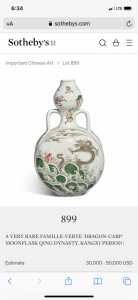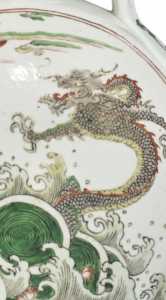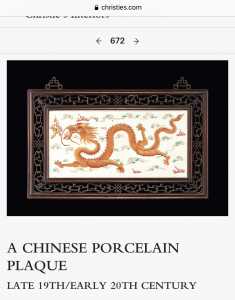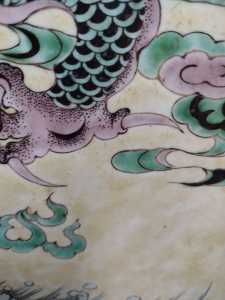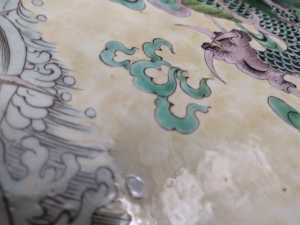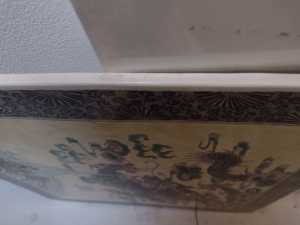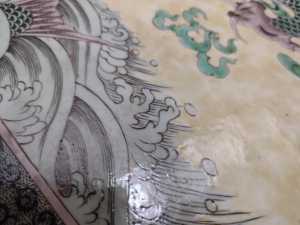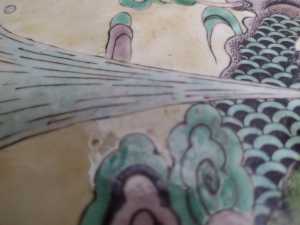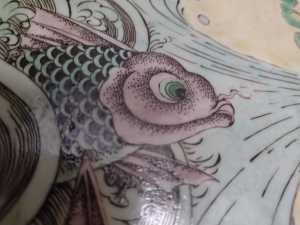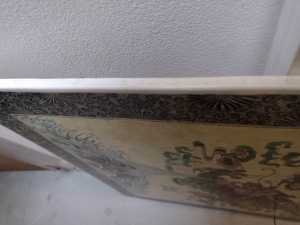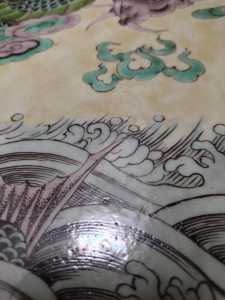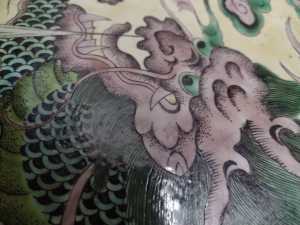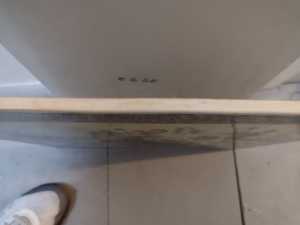The Chinese and Asian Art Forum. For Fans, Collectors and Dealers.
 Basic Rules For the BidAmount Asian Art Forum: Talk about whatever you want. You can even discuss and offer things that are for sale if they are authentic. Maximum image file size per post is 2 MB. Images of 700pxl x 700pxl are optimal if saved at a medium resolution. Be respectful of others and enjoy yourself. Click the YouTube link for a brief tutorial on using the forum. You can also EMBED Videos by cutting and pasting from You-Tube, Vimeo etc.
Basic Rules For the BidAmount Asian Art Forum: Talk about whatever you want. You can even discuss and offer things that are for sale if they are authentic. Maximum image file size per post is 2 MB. Images of 700pxl x 700pxl are optimal if saved at a medium resolution. Be respectful of others and enjoy yourself. Click the YouTube link for a brief tutorial on using the forum. You can also EMBED Videos by cutting and pasting from You-Tube, Vimeo etc.
NOTE: To post an item or add a new post, click open the category title from the FORUM LIST, and CLICK the Blue ADD TOPIC button.
That’s a really nice early 20th century plaque would look great on any wall in the house.
Didn't someone say: green eyed dragons are Guangxu or later?
It was Mark in relation to a saucer I own and it was the similarity that made me think 19th c.
Although, as Mark says the dragon is different to the usual style, we recently saw different styles on the same piece in a recent thread so it does seem to be likely to be from then.
The dragon is to animated for Kangxi period dragon. I have seen this style of dragon before it was dated 19th to 20th century. Here are two dragons to compare.
@thomasumjohnson sorry to chime in so late. The rendering looks very deliberate, and in many ways quite nice, but the dragon’s rendering is odd…. I can’t quite explain that at the moment.
What I can say is your photos aren’t clear enough nor close enough to look at the texture of the enamels.
Can you post close up photos in bright light (natural if possible) of some details of the face of the dragon, fish, yellow areas, and the unglazed back?
The rendering of scaling reminds me of a polychrome pair of phoenixes that I bought a few years ago that I showed to several well respected dealers, and the general consensus was first half of the 20th c.
@greeno107 Thanks for sharing an interest. I got the Plaque Yesterday. Here are some more photos, with a better colour rendition. The colour in the photos looks almost right to me although perhaps a little more brown in the yellows in real life.. Also photos of the back..
@thomasumjohnson Unfortunately, I don’t really see any improvement to your photos.
You need to photograph it in very bright light, such as direct sunlight. Close up photos of the enamel should be taken about 8” away, focus on details of the face and yellow background, and take one shot of the front of the plaque held at an angle so I can see the texture of the enamel.
I would also like to see the edge of the plaque.
Good luck!
@greeno107 OK.. I've taken these with my phone because I can't get closer with my "real" camera lens... Thanks again for taking an interest..
There are similarities to this Famille Jaune beast brush washer..
Thank you for additional pictures I didn’t realize the plaque was so large. I’m going to move my original opinion to 2nd half 20th century or maybe later. The enamels are all off. The large size is not typical for early periods. The rendering is not consistent this was intended to be a presentation piece but zero shading. No edge fritting contraction the plaque is also very uniform no warping seems and corners perfectly aligned. That would be very hard for such a large piece of the period in a wood fire kiln.
Hello, Thomas
In my thoughts from the way the dragon and the way the clouds look it’s late 19th, or early 20th century, John
@john-steward I’m very curious as to your reference to this being a 19th century rendering of a dragon. I don’t think I ever seen a dragon rendering incorrectly and missing parts. If you look closer the wrapping of the dragons body is incorrect and going in the wrong direction the body is not consistent with any early dragon form. I would love to see a comparison if you have one,
Brian, you are right, the scales do look to be in the wrong direction on the first coil behind the head. How interesting! I don't see any bits missing though, as the clouds obscure the body in places.
There is shading, the dots and lines were often used to give depth and the eyes are also typically Guangxu. However, as has been said before, the scales are not the typical Guangxu type, but we did see two different types of dragon scales on a piece from that period fairly recently. I remember we commented on the difference in that thread only I can't remember what it was called otherwise I would look it up.
I am also surprised it is that big, that does seem less common although most modern (fake) plaques that I have seen have a ridged back of sorts, not flat.
@thomasumjohnson Thank you! Those photos are helpful.
First, it’s a nice looking plaque, but be careful not to draw comparisons with Kangxi mark & period works… only some elements of the style look Kangxi, and if I recall correctly, you don’t think it’s actually Kangxi period.
If we’re looking to identify the true age, then aspects that Brian and Julia have mentioned should be considered important.
The finished edges, absence of ridges on the back from supports used in early firing, and the unusual rendering of the dragon all point to a more recent creation date than late 19th - early 20th c.
I would put the date around 1970, a period where some excellent commemorative pieces were made.
@julia the dragon is a 3 legged dragon that’s what’s missing the artist wasn’t skilled enough to understand the correct placement I have read that modern artist have a hard time correctly drawing dragons almost all modern dragon have this trait. The clouds are also not correct thick black lines they are stiff and uncoordinated. If I am shown one 19th dragon painted in this style I would be happy to adjust my opinion the more I look at it the more I see inconsistencies.
I don't think the missing leg is an issue, it would be back behind the rear one, not forward of it. I do find the rear one has poor perspective, it is very big. I can't decide if that is deliberate.
I am going to have to find that thread and look at the other dragon, again.
Thanks for visiting "The BidAmount Asian Art Forum | Chinese Art"
If you sell on eBay, or have a shop feel free to post images and descriptions and links.
Check back often for discussion about the latest news in the Chinese art and antique world. Also find out about the latest Asian art auctions at Sotheby's, Christie's, Bonhams and Tajans.
Auction results for: fine porcelain, ceramics, bronze, jade, textiles and scholar's objects. As well as Japanese, Thai, Vietnamese and other Asian cultures.
Thank you,
Peter Combs
Topics and categories on The BidAmount Asian Art Forum | Chinese Art
Kangxi vases, Kangxi dishes and chargers, Kangxi ritual pieces, Kangxi scholar's objects, Qianlong famille rose, Qianlong enamels, Qianlong period paintings, Qianlong Emporer's court, Fine porcelain of the Yongzheng period. Chinese imperial art, Ming porcelain including Jiajing, Wanli, Xuande, Chenghua as well as Ming jades and bronzes.
The BidAmount Asian Art Forum | Chinese Art
A free Asian art discussion board and Asian art message board for dealers and collectors of art and antiques from China, Japan, Korea, Thailand, Cambodia, Vietnam and the rest of Asia. Linked to all of the BidAmount Asian art reference areas, with videos from plcombs Asian Art and Bidamount on YouTube. Sign up also for the weekly BidAmount newsletter and catalogs of active eBay listing of Chinese porcelain, bronze, jades, robes, and paintings.
The art of calligraphy - and for the ancient Chinese it certainly was an art - aimed to demonstrate superior control and skill using brush and ink. Calligraphy established itself as one of the major Chinese art forms during the Han dynasty (206 BCE - 220 CE), and for two millennia after, all educated men were expected to be proficient at it.
The Museum’s collections of Asian art span nearly five millennia and encompass the cultures of China, the Himalayas, India, Japan, Korea, and Southeast Asia. In 2007, the Museum launched an initiative to create dedicated galleries for the collection, beginning with a gallery for the arts of Korea ...
Chinese art is full of symbolism, in that artists typically seek to depict some aspect of a totality of which they are intuitively aware.
China Online Museum is the finest online museum of Chinese art. It features Chinese calligraphy, painting, ceramics, bronzes, carving, and other artworks.
Chinese Ceramics & Works of Art. Overview Upcoming auctions Contacts Auction results ... Christie’s sales of Chinese ceramics and works of art showcase centuries of Chinese history. Held throughout the year in London, New York, Paris and Hong Kong, they attract a wide audience of collectors and connoisseurs vying for pieces as diverse as ...
Explore Asian Art Week. Contact the Specialist Department. Chinese Paintings ... Senior Specialist, Head of Sale. [email protected]. Tel:+1 212 641 5760. Bid in-person or online for the upcoming auction:Fine Chinese Paintings on 10 September 2019 at New York. Bid in-person or online for the upcoming auction:Fine Chinese Paintings on 10 ...
Discover an abundance of must-see art from all corners of a vast continent at Christie’s NY Asian Art Week. From contemporary classical and Chinese paintings to works with exemplary provenance from the Art Institute of Chicago, our Rockefeller Paza galleries will be full of ancient treasures and contemporary masterworks in a salute to the vibrant arts of Asia.
Sold to benefit The Art Institute of Chicago’s Asian Art Acquisition Fund, the sale features 84 lots with a focus on Ming and Qing porcelains, and offers a rare insight into the taste for collecting Chinese ceramics and works of art in the Midwest from the end of the 19th century through the 1980s. Highlights include two Wanli wucai garlic-head vases, a Qianlong mark and period, blue and ...
Specialist, Chinese Paintings, Christie's London Dr Malcolm McNeill is a Specialist in Chinese Paintings at Christie’s, based in London. He previously worked as an assistant curator of the Chinese collections and the Victoria and Albert Museum in London, as a researcher at the British Museum, and as a translator and tour guide at the National Palace Museum in Taipei.
The Christie's Education 2020 Conference: The Chinese Art Market 18 Jun 2019 Christie’s Education is delighted to announce our first international academic conference in Asia which will take place in Hong Kong from 26-27 November 2020 at the Hong Kong Convention and Exhibition Centre and will run in parallel with Christie’s Hong Kong Autumn Auctions.
The summer Chinese Art sale in Hong Kong will feature works of art from several private collections, including Qing porcelains and textile from the collection of the legendary Chinese art dealer A. W. Bahr (1877–1959), fine gilt bronze Buddhist sculptures from an old Hong Kong collection, an East Asian collection of Qing dynasty wine cups and jades, and a Japanese collection of Song ceramics ...
Sotheby's Chinese Works of Art Department holds two auctions each year in London, New York, Hong Kong and Paris.
Chinese Art - View Auction details, bid, buy and collect the various artworks at Sothebys Art Auction House.
With more than 340 Chinese works of art dating from the Neolithic to the Republic periods, highlights of this sale include a selection of Qing Imperial monochromes from the collection of Arnold and Blema Steinberg, early ceramics from the Art Institute of Chicago and Chinese porcelain and works of art from the collection of Henry Arnhold.
Results: Sotheby's Asia Week achieved $52.4 million in six strong auctions, exceeding pre-sale estimates. With 76.5% of lots sold and 60.3% of lots surpassing high estimates, the Asian art sales at Sotheby's indicate continued collector interest in the finest works of art from China, India and and the Himalayas.
Today's sale of Important Chinese Art will proceed as planned with sessions at 10 AM and 2 PM EDT. Sotheby's will be monitoring the weather conditions throughout the day and will be available to coordinate alternative bidding options should conditions make it difficult for clients to attend the auction in person.
Bonhams Chinese Art department is renowned for offering the finest works of art representing the richness and breadth of China's artistic heritage, particularly Imperial porcelain, white and spinach green jades, cloisonné and Buddhist art. Specialised international auctions are held globally, including London, Hong Kong and San Francisco.
Bonhams : Chinese Works of Art We use cookies to remember choices you make on functionality and personal features to enhance your experience to our site. By continuing to use our site you consent to the use of cookies. Please refer to our privacy and cookie policies for more information.
Bonhams Fine Art Auctioneers & Valuers: auctioneers of art, pictures, collectables and motor cars. We use cookies to remember choices you make on functionality and personal features to enhance your experience to our site. By continuing to use our site you consent to the use of cookies. ... Chinese Art (US) General enquiries
Bonhams : Fine Chinese Art We use cookies to remember choices you make on functionality and personal features to enhance your experience to our site. By continuing to use our site you consent to the use of cookies. Please refer to our privacy and cookie policies for more information.
Bonhams Fine Art Auctioneers & Valuers: auctioneers of art, pictures, collectables and motor cars Bonhams : Asian Art We use cookies to remember choices you make on functionality and personal features to enhance your experience to our site.
Bonhams are international auctioneers of fine Chinese and Japanese art. We specialise in rare Imperial and Export Chinese ceramics and works of art, as well as Japanese ceramics, fine and decorative works of art from the Neolithic Period to the 20th century. View on map
Bonhams Fine Art Auctioneers & Valuers: auctioneers of art, pictures, collectables and motor cars. We use cookies to remember choices you make on functionality and personal features to enhance your experience to our site. By continuing to use our site you consent to the use of cookies. ... Asian Art Bonhams. Work. 22 Queen St.
